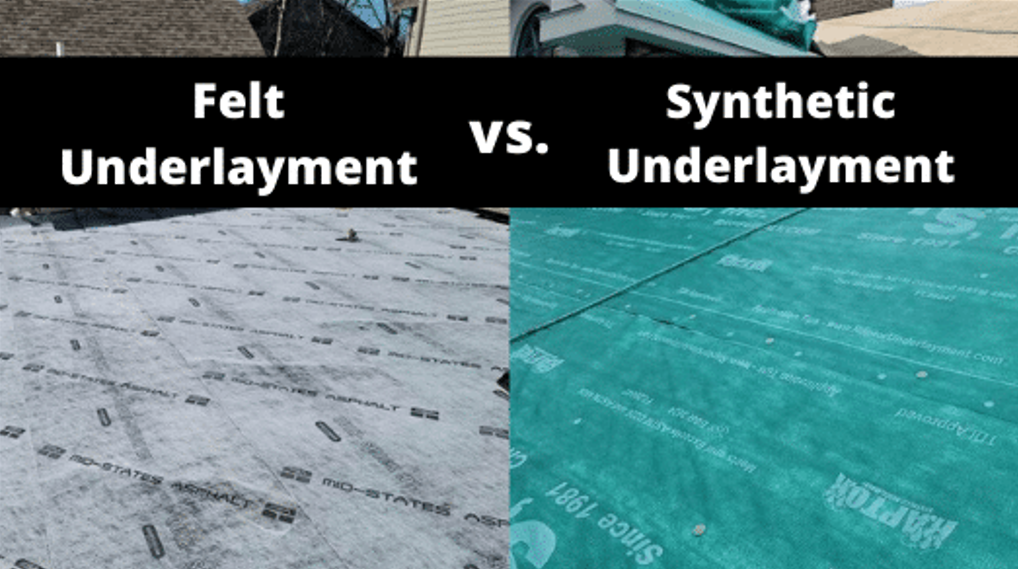Felt Vs Synthetic Underlayment: Choosing the Right Option for Your Roof
When deciding between felt and synthetic underlayment for your roof, understanding the fundamental differences in materials and performance is essential. Homeowners often find that consulting with a dependable roofing team provides valuable insights tailored to their specific situation. Felt underlayment, made from natural materials like wood cellulose, offers reasonable water resistance but may be prone to tearing. In contrast, synthetic underlayment, composed of polypropylene or polyester, delivers superior tear resistance, UV protection, and durability while being lighter and easier to install. Recognizing these distinctions helps you make a well-informed decision that ensures optimal protection and longevity for your roof.
Key Differences Between Felt and Synthetic
Understanding the key differences between felt and synthetic roofing underlayment is crucial for making an informed decision about your roof. Felt underlayment, traditionally made from natural materials such as wood cellulose or recycled paper, provides decent water resistance and has been a roofing staple for decades. Synthetic underlayment, manufactured from polypropylene or polyester, offers superior tear resistance, durability, and UV protection compared to felt. Synthetics are significantly lighter, easier to install, and provide enhanced protection during the roof installation process. These fundamental differences play a vital role in selecting the most appropriate underlayment for your specific roofing needs and ensuring the long-term performance of your roof system.
Pros and Cons of Felt Underlayment
Evaluating felt underlayment requires analyzing its strengths and weaknesses compared to synthetic alternatives. Felt underlayment, made from natural materials like cellulose or bitumen-saturated felt, offers good water resistance at a relatively affordable price point. It provides adequate protection during roof installation and has a long history of use in the industry. However, felt’s susceptibility to tearing during installation, especially in windy conditions, can compromise its effectiveness as a moisture barrier. Additionally, felt underlayment weighs more and generally doesn’t last as long as synthetic options, affecting both installation ease and long-term performance. While felt has served the industry well for generations, advances in synthetic materials have introduced more robust and efficient alternatives for modern roofing needs.
Advantages of Synthetic Underlayment
Synthetic underlayment delivers superior water resistance and durability compared to traditional felt options. This modern alternative offers several significant benefits:
- Water Resistance: Synthetic underlayment provides exceptional waterproofing capabilities, preventing moisture infiltration that could damage the roof deck or interior spaces.
- Durability: With outstanding tear resistance and strength, synthetic underlayment stands up to harsh weather including high winds and heavy rainfall, ensuring lasting protection.
- Lightweight: The lighter weight of synthetic underlayment makes handling and installation more manageable while reducing the overall load on the roof structure.
These characteristics make synthetic underlayment a reliable choice for maintaining the integrity and extending the life of your roofing system.
Durability and Longevity Comparison
Comparing the durability and longevity of different underlayment options reveals important distinctions for selecting the most resilient roofing material. Synthetic underlayment consistently outperforms felt in terms of durability and lifespan. Materials like polyethylene and polypropylene resist tearing, wrinkling, and UV damage more effectively than traditional felt. Synthetics provide better moisture protection, preventing the mold and mildew growth that can compromise roof integrity over time. Additionally, synthetic underlayment withstands extreme weather conditions more reliably than felt alternatives. When evaluating underlayment options based on durability and longevity, synthetic materials typically offer a more robust and enduring solution for protecting your roof.
Factors to Consider When Choosing
Several key factors should guide your selection of the most appropriate underlayment for your roof. Consider the following when making this important decision:
- Climate Conditions: Evaluate the typical weather patterns in your region, including temperature fluctuations, humidity levels, and precipitation amounts. Your chosen underlayment should withstand the specific environmental challenges of your area.
- Roofing Material Compatibility: Different roofing materials may require specific types of underlayment for optimal performance and longevity. Select an underlayment that works well with your chosen roofing material.
- Installation Requirements: Factor in the ease of installation and any special considerations associated with different underlayment options. Some products install more easily than others, potentially affecting your project’s overall cost and timeline.
Related Topics:


3 Comments
Comments are closed.